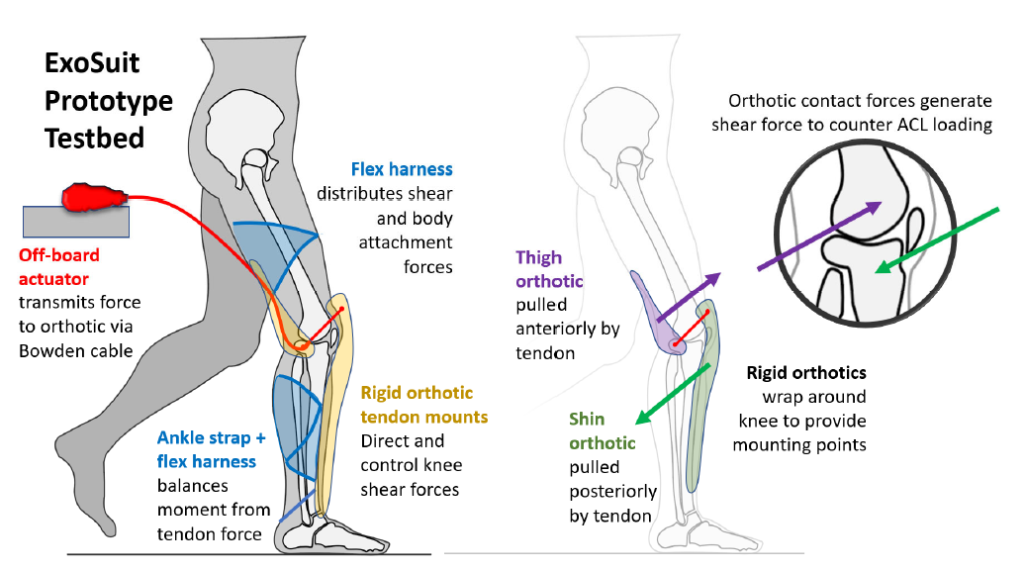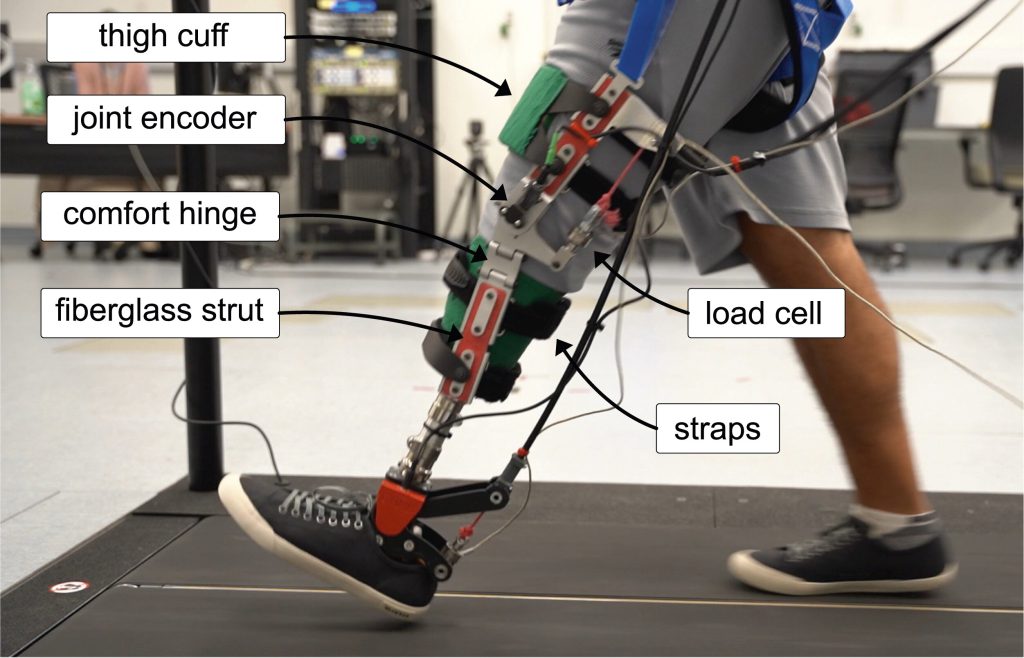Dr. Aubin’s research spans robotics and biomechanics with applications in health and mobility. He motivates his research by engaging with patients and stakeholders to understand shortcomings in the areas of rehabilitation, prosthetics, orthotics, and physical therapy. Dr. Aubin strives to address these unmet patient and caregiver needs by establishing multidisciplinary research teams that leverage state of the art technologies in robotics, neuroscience, and computational intelligence. Dr. Aubin’s research goal is to develop and utilizes novel sensors, algorithms, assistive powered devices, and robotic tools that can augment human performance and/or improve mobility and function for those affected by disease, age or trauma.
Active Knee Brace for ACL Injuries

This project will build and validate a smart, active functional knee brace and its ability to apply time-varying knee shear load patterns to protect the ACL during dynamic activity. This goal of the device is to motivate creation of a new class of soft robotic knee exoskeletons that will facilitate the Warfighter’s recovery from ACL injury.
This project is in collaboration with SRI International (Dr. Tom Libby), UW Orthopedics (Dr. William Lack), and UW Department of Rehabilitation Medicine (Geoff Balkman).
Design and Evaluation of a Biarticular Prosthesis to Reduce Gait Compensations

The purpose of this Career Development Award is to improve the mobility and quality of life of veterans with transtibial amputation through the development of a novel biarticular prosthesis. (Image source)
Robotic Knee Exoskeleton to Reduce Joint Loading and Improve Mobility in Veterans with Medial Compartment Knee Osteoarthritis

The purpose of this project was to create a new class of robotic knee exoskeletons that utilized these 21st century advances to improve the efficacy, comfort, and performance of knee unloader braces. (Image source)
3D Printed Diabetic Insole

The purpose of the custom insole is to cushion the feet, evenly distribute pressures, and to selectively offload areas of increased pressure. Advances in 3D printing, materials, and software have enabled new 3D printed metamaterials whose properties are derived not only from the base material but also from lattice microstructures within the metamaterial. We are proposing to redesign diabetic insoles to use 3D printing with patient-specific stiffness and structural behavior. The purpose of this study is to determine if the 3D printed insoles are better at reducing plantar pressures than the traditional insoles. The results of this study can help reduce annual rates of lower limb loss within our Veteran population.
A Biofeedback Smart Cane to Reduce Knee Loading Associated with Osteoarthritis

The aim of this project was to accelerate the commercialization and clinical translation of the smart cane, a novel cloud connected walking cane for people with knee osteoarthritis.
Do Rocker Bottom Shoes and Ankle-Foot Orthoses Reduce Pain and Improve Mobility for Ankle Osteoarthritis Patients?

This clinical trial compared the efficacy of rocker bottom shoes and ankle-foot orthoses to manage ankle osteoarthritis in terms of mobility, pain, and bone motion as measured with biplane fluoroscopy.
